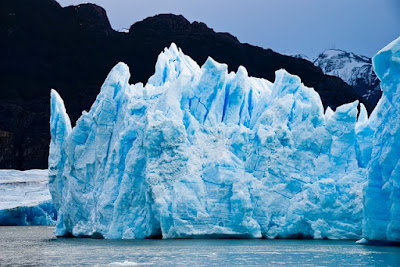As what we are anticipating about the climate change, the studies on Arctic are resembling the same. Due to the skyrocketing temperatures, there are alterations in the melting of ice and land, ocean circulation, and dissolving permafrost.
The SWIPA (Snow, Water, Ice and Permafrost in the Arctic) Assessment findings show that the sea ice hit a record-low maximum for the third year in a row. Temperatures averaged 11 degrees F above normal, driven by sustained mild weather that was punctured by periods of almost unheard of heat when temperatures reached up to 50 degrees F above normal.
“The Paris agreement will not save the Arctic as it is today,” says Lars-Otto Reiersen, executive secretary of the group behind the latest edition of “Snow, Water, Ice, Permafrost in the Arctic” (SWIPA), a report produced under the auspices of the Arctic Council, a scientific-policy club for the eight countries with territory in the Arctic Circle), as well as observers including China and India.
Atmospheric concentration of carbon dioxide has now reached 400 parts per million (ppm), up from 280ppm three centuries ago; the Earth is on average 1ºC hotter than in pre-industrial times. Although 190-odd countries signed up to limit warming to “well below” 2ºC above pre-industrial temperatures in Paris in 2015, pledges for mitigating action are likely to see temperatures increase by around 3ºC—assuming countries stick to their promises. But different parts of the world warm at different rates. Even if the Paris agreement is implemented in full, the Arctic will warm by between 5ºC and 9ºC above the 1986-2005 average over the Arctic ocean in winter.
The melting of the sea ice will increase the possibility of navigation through Arctic and Arctic soils holds up to 50% of the world’s soil carbon. These findings were made by a team of more than 90 researchers. It is evident from the findings that even the Paris Agreement cut off of 2 degrees rise in temperatures will not stop this melting to happen.
Source: Climatecentral.org, The Economist
The SWIPA (Snow, Water, Ice and Permafrost in the Arctic) Assessment findings show that the sea ice hit a record-low maximum for the third year in a row. Temperatures averaged 11 degrees F above normal, driven by sustained mild weather that was punctured by periods of almost unheard of heat when temperatures reached up to 50 degrees F above normal.
“The Paris agreement will not save the Arctic as it is today,” says Lars-Otto Reiersen, executive secretary of the group behind the latest edition of “Snow, Water, Ice, Permafrost in the Arctic” (SWIPA), a report produced under the auspices of the Arctic Council, a scientific-policy club for the eight countries with territory in the Arctic Circle), as well as observers including China and India.
Atmospheric concentration of carbon dioxide has now reached 400 parts per million (ppm), up from 280ppm three centuries ago; the Earth is on average 1ºC hotter than in pre-industrial times. Although 190-odd countries signed up to limit warming to “well below” 2ºC above pre-industrial temperatures in Paris in 2015, pledges for mitigating action are likely to see temperatures increase by around 3ºC—assuming countries stick to their promises. But different parts of the world warm at different rates. Even if the Paris agreement is implemented in full, the Arctic will warm by between 5ºC and 9ºC above the 1986-2005 average over the Arctic ocean in winter.
The melting of the sea ice will increase the possibility of navigation through Arctic and Arctic soils holds up to 50% of the world’s soil carbon. These findings were made by a team of more than 90 researchers. It is evident from the findings that even the Paris Agreement cut off of 2 degrees rise in temperatures will not stop this melting to happen.
Source: Climatecentral.org, The Economist
